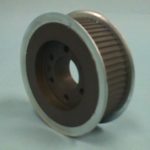Globax news
Blog

Emerging Trends and Developments in Thermoplastic Elastomers
What does the future hold for the thermoplastic elastomer market?
According to Omnexus:
The thermoplastic elastomers industry is finding new avenues for growth from emerging applications in the continuously transforming end-use industries. The major factors driving the growth of TPEs include:
- Versatility and safe properties of thermoplastic elastomers, and
- Advancements in the thermoplastic elastomer processing industry.
Further, the trend in petroleum prices and increasing sustainability initiatives worldwide have forced thermoplastic elastomer manufacturers to develop bio-based TPE products offering hardness levels and performance matching with that of its fully synthetic counterparts.
Understand how these trends are driving TPE demand in new applications in detail, but, first let us begin with the basics of thermoplastic elastomers.
Thermoplastic Elastomers (TPE) Ecosystem
Thermoplastic elastomers are a class of polymers having properties of both thermoplastics and elastomers to meet the needs of applications for efficient functioning. They are obtained by linking thermoplastics with elastomeric rubbers. They, therefore, provide advantages of both plastics and rubber, hence creating a new form, highly adaptable in many applications.
There are six main types of thermoplastic elastomers namely: Styrenic Block Copolymers (SBC)Thermoplastic Polyurethane (TPU)Thermoplastic Vulcanizates (TPV)Thermoplastic Polyolefins (TPO)Copolyester Ether Elastomers (COPE), andPolyether Block Amide Elastomer (PEBA) Styrenic Block Copolymers (SBC)Thermoplastic Polyurethane (TPU)Thermoplastic Vulcanizates (TPV)Thermoplastic Polyolefins (TPO)Copolyester Ether Elastomers (COPE), andPolyether Block Amide Elastomer (PEBA)These are listed according to their increasing price and performance. |
The high impact and tear strength of thermoplastic elastomers have increased their demand in the automotive, building & construction industries. Thermoplastic elastomers are recyclable, colored, environment-friendly, extruded and safe-to-use in medical and food packaging applications.
They are popular because of their easy moldability at room temperature due to heating, which is similar to plastic and elastomer. Their properties, such as heat stability, smoothness, wear resistance, and scratch resistance, are used in the end-use industries.
Major Suppliers, Compounding & End-use Companies of Thermoplastic Elastomers (TPE)
» Discover All Thermoplastic Elastomers Available in the Market Today!
Several end-use markets benefit from the use of thermoplastic elastomer, but the level of application differs, and only a specific type is used in an application. Thermoplastic elastomers are commonly used in three applicability levels:
- Low-performance commodity
- General purpose, and
- High-performance specialty
Target Applications for Specialty and High-performance Elastomers at a Granular Level
The major end-use markets that consume thermoplastic elastomer are automotive, building & construction (B&C), engineering, footwear, wire & cable (W&C), medical, hose & tube, personal care, sports & leisure, and other minor markets.
Target Applications of Thermoplastic Elastomers (TPE)
Increased Usage of High-performance Elastomers in Automotive Industry Creating New Opportunities
Automotive is estimated to remain the largest end-use industry of thermoplastic elastomer during the forecast period, followed by building & construction, in terms of volume.
- Thermoplastic elastomers are used for exterior body parts, such as exterior filler panels, wipers, rocker panels, body seals, automotive gaskets, door & window handles and vibration damping pads.
- Recent developments in thermoplastic elastomer have enabled its use in automobiles under-the-hood applications, such as belts & hoses, clamps, fuel lines, buffer blocks for bonnets & boots and bellows.
Automotive Industry Creating New Opportunities
Other Key Markets Involving TPE Application
In the building & construction industry, a thermoplastic elastomer is used for bitumen modification, roofing membranes, weather-stripping, waterproofing, carpeting, wall coverings, window & weather seals, windows & door frames, artificial turf, road markings, expansion joints, and shelter components.
In the consumer market, overmolding applications include consumer non-durables, handheld electronic devices, home appliances, and computers.
Multiple innovative technologies have been developed, offering novel functional performances to address different applications. The examples of fruitful innovations in thermoplastic elastomers market are for:
- Elevated temperature resistance
- Medical tubing, and
- Versatile vibration damping
Major manufacturers are successfully developing an entirely new class of high-performance thermoplastic elastomers, raising market standards, and offering huge advantages over conventional thermoplastic elastomers. Such high-performance thermoplastic elastomers are stable during continuous exposure to
temperatures as high as 302°F and are chemically inert.
The growing demand from the automotive industry in Asia-Pacific, the environment-friendly nature of thermoplastic elastomers, and advancement in the thermoplastic elastomer processing industry is likely to boost the thermoplastic elastomers market. The major restraining factors of the thermoplastic elastomers market are price volatility of raw material, and technical difficulties in developing low cost, economic thermoplastic elastomer products.
New Opportunities for Thermoplastic Elastomers
Bio-based Thermoplastic Elastomer
The majority of thermoplastic elastomer has been conventionally compounded and manufactured from raw materials based on fossil fuels to some extent. However, increasing environmental awareness and the trend in petroleum prices drive the thermoplastic elastomer industry toward sustainable and green programs.
To develop environmentally friendly products, Europe and North America have developed guidelines that accord preferential treatment to products procured by public institutions classified as bio-preferred, which means that these meet minimum renewable raw material content standards. Thus, as an alternative, thermoplastic elastomer manufacturers are forced to develop bio-based products derived from renewable resources streamlined by environmental regulations.
The bio-based thermoplastic elastomer is made using several bio-based raw materials. Some of the predominantly used ones include:
- Starch ranging from 30%–50%
- Castor & canola oil
- Polyols from vegetable oils & fatty acids
- Corn & soybean oil
These bio-based thermoplastic elastomers’ mechanical properties match with that of its fully synthetic counterparts and thus offer a sustainable material solution for many applications. These thermoplastic elastomers are soft and pliable, providing stretch with some recovery for soft-grip applications, such as:
- Handles for bicycles and tools
- Cosmetics packaging
- Housewares
- Household appliances
- Footwear, and
- Automotive applications
They find application in hoses and tubing for automotive and industrial uses, boots for constant velocity (CV) joints, airbag doors, and energy dampers.
Applications of Bio-based Thermoplastic Elastomers
Bio-thermoplastic elastomers are processed by conventional thermoplastic methods, such as:
- Injection molding
- Blow molding, and
- Extrusion
Increasing Demand from Emerging Applications
The thermoplastic elastomer has successfully captured significant market shares of the materials it has been replacing due to the high flexibility and adjustable set of properties.
Medical and healthcare markets require design flexibility, the biocompatibility of additives (for instance, phthalates), and the potential for replacing PVC, which are opening up opportunities for thermoplastic elastomers. Thermoplastic elastomers have been used in the medical application due to their:
- High degree of purity (low level of extractable compounds)
- Stabilizability (gamma, e-beam, ethylene oxide (EtO), and autoclave)
- Excellent sealing and adhesion performance (overmold adhesion)
- FDA compliance
- Being latex and PVC-free,
- Availability of UPS VI certified classes, and
- Recyclability and cost effectiveness over silicone materials
These are also used to replace latex and PVC materials. Healthcare and medical product manufacturers are concerned about the green aspects of product disposal and the safety of the product in use.
Additionally, thermoplastic elastomer properties, such as soft-touch and ergonomic grip add ease-of-use value to medical devices. Also, disposable medical products are another growing segment of thermoplastic elastomers. Thermoplastic elastomers find application in:
- Baby bottle teats
- Pacifiers
- Cutlery, and
- Handles of cups & mugs as PVC-free alternatives
Thermoplastic elastomer is proven to be a safer alternative to PVC-based applications and processing.
Next-Gen Mobility, Lightweighting, Digitalization, and Improved Medical & Pharmaceutical Solutions are the New Sources Which Will Change Future Revenue Mix of Suppliers With a Strong Push for Thermoplastic Elastomers Demand
Regulations and Standards Widening the Scope
Due to recently increased new product development and commercialization of TPE, regulatory compliance requirements scope is widening and compliance mandates vary significantly from one country or region to another.
The Food and Drug Administration (FDA) and a variety of EU-wide amendments regarding the approval of food contact materials and chemicals have led to the use of certain additives, especially plasticizers. The use of phthalates, according to these regulations, is to be limited or even prohibited. The industry has been looking for
alternatives to be used as a replacement for the PVC-based sealant material to comply with these regulations.
A range of thermoplastic elastomers has been approved by these regulatory bodies, which have provided packagers with a broader range of options for materials that can be used for food contact applications. Food packaging and closures typically need:
- Excellent sealing
- Low extractability
- Long shelf life
- Formulation cleanliness
- Recyclability, and
- Shorter cycle times
Besides, manufacturers of food packaging and closures often require clear or brightly colored materials to attract consumer attention. Thermoplastic elastomer compounds provide these advantages, unlike the cross-linked elastomers.
Food contact applications where elastic and soft-touch materials are fit for use are numerous. However, due to food safety administrative regulations, distinctions have been made in the consumer products as single-use or multiple-use. The required recyclability with minimal loss in properties during multiple reuses is delivered using thermoplastic elastomers.
Much of TPE applications mandatory compliance regulatory agencies and need OEM approval. The most evident are:
- REACH SVHC
- RoHS
- UL certification
- OEM automotive approvals
- FDA & EU food contact compliance certification, and other FDA safety compliance
- Medical ISO 10993 or USP Class VI compliance, and
- NSF 51 and 61 compliance
Mandatory Compliance Regulatory Agencies for Thermoplastic Elastomers (TPE)
Conclusion
Several TPE manufacturers have followed strategies such as expansions, new product developments, mergers & acquisitions to address the demand of end-use industries and increase their global footprint. The conventional revenue streams such as automotive are not growing as good as history indicates, all the end-use industries are transforming so do their performance needs from materials. That is precisely why industry players are exploring more applications of thermoplastic elastomers by focusing on continuous R&D.
The major challenge faced by the new entrants in the thermoplastic elastomers market is sustaining in the vastly competitive scenario where there are many established players with strong brand names.


















